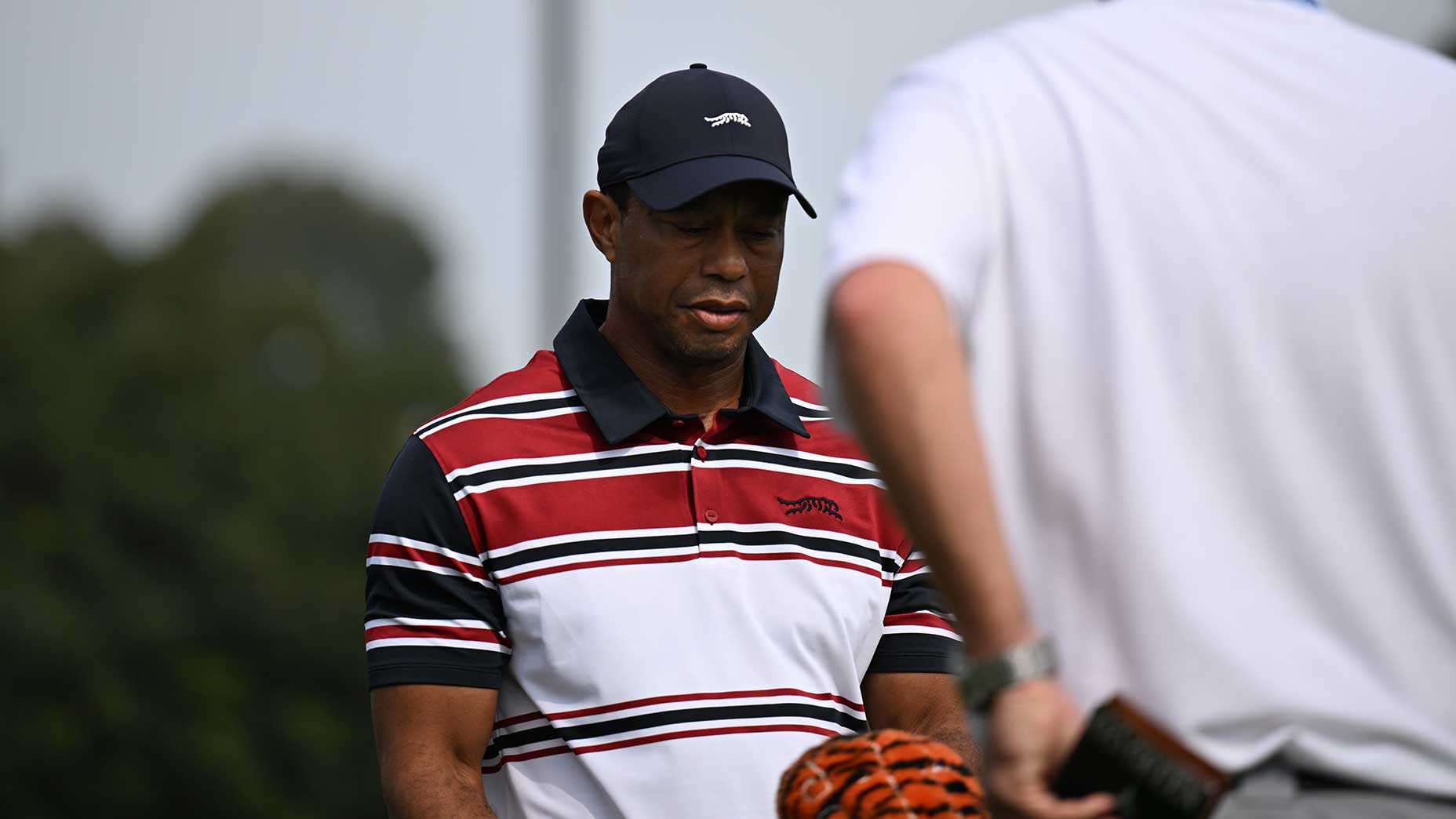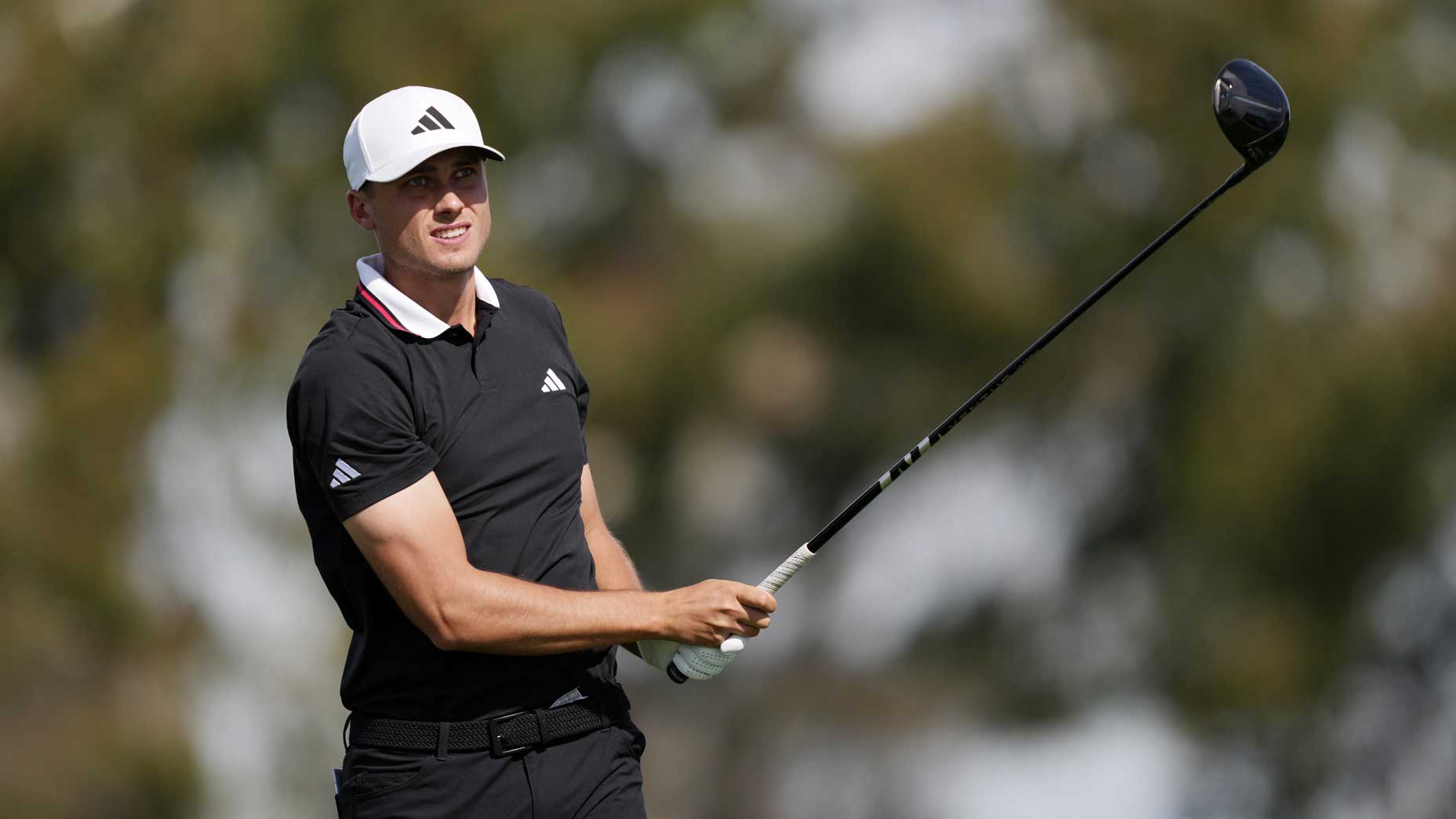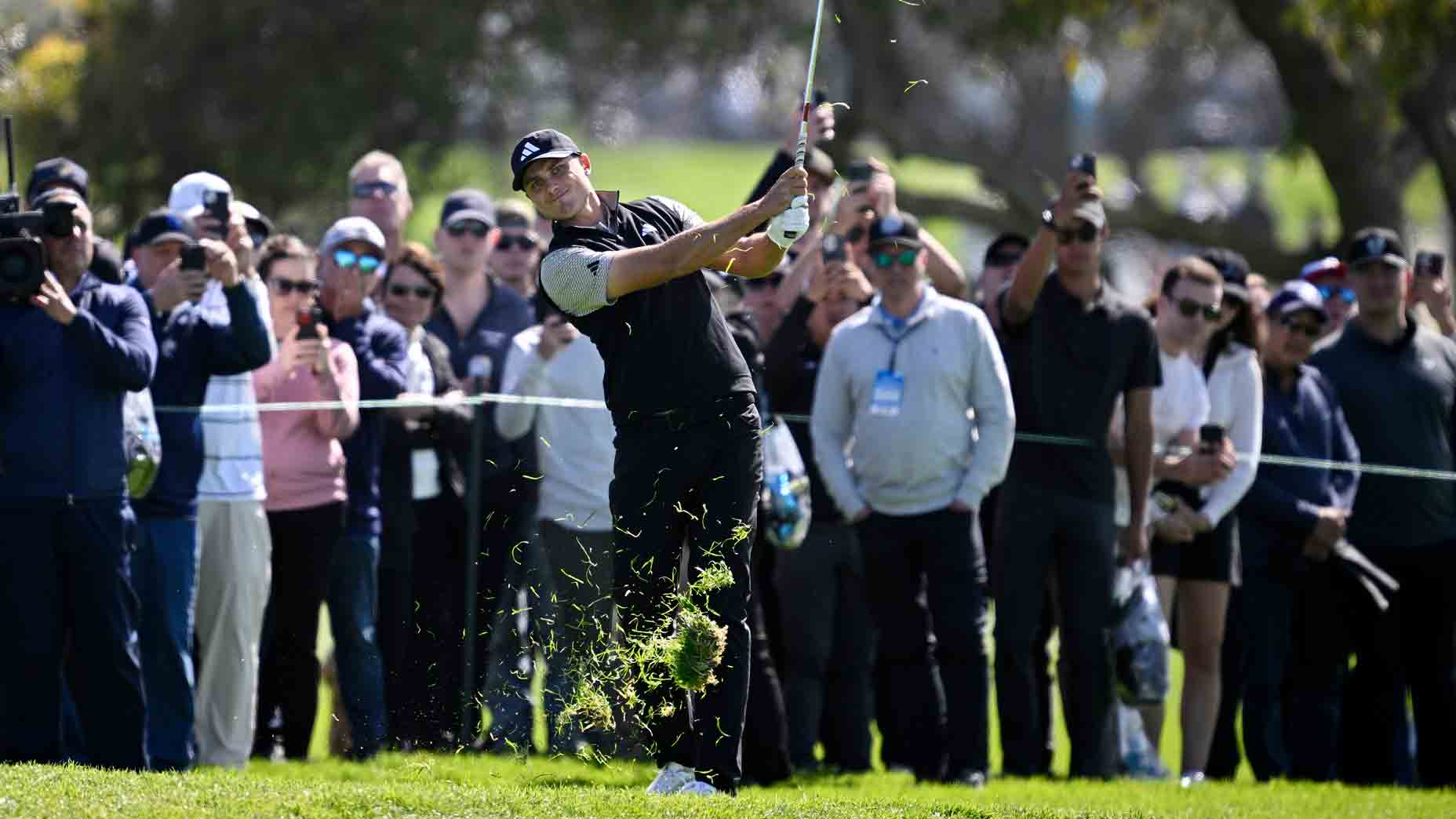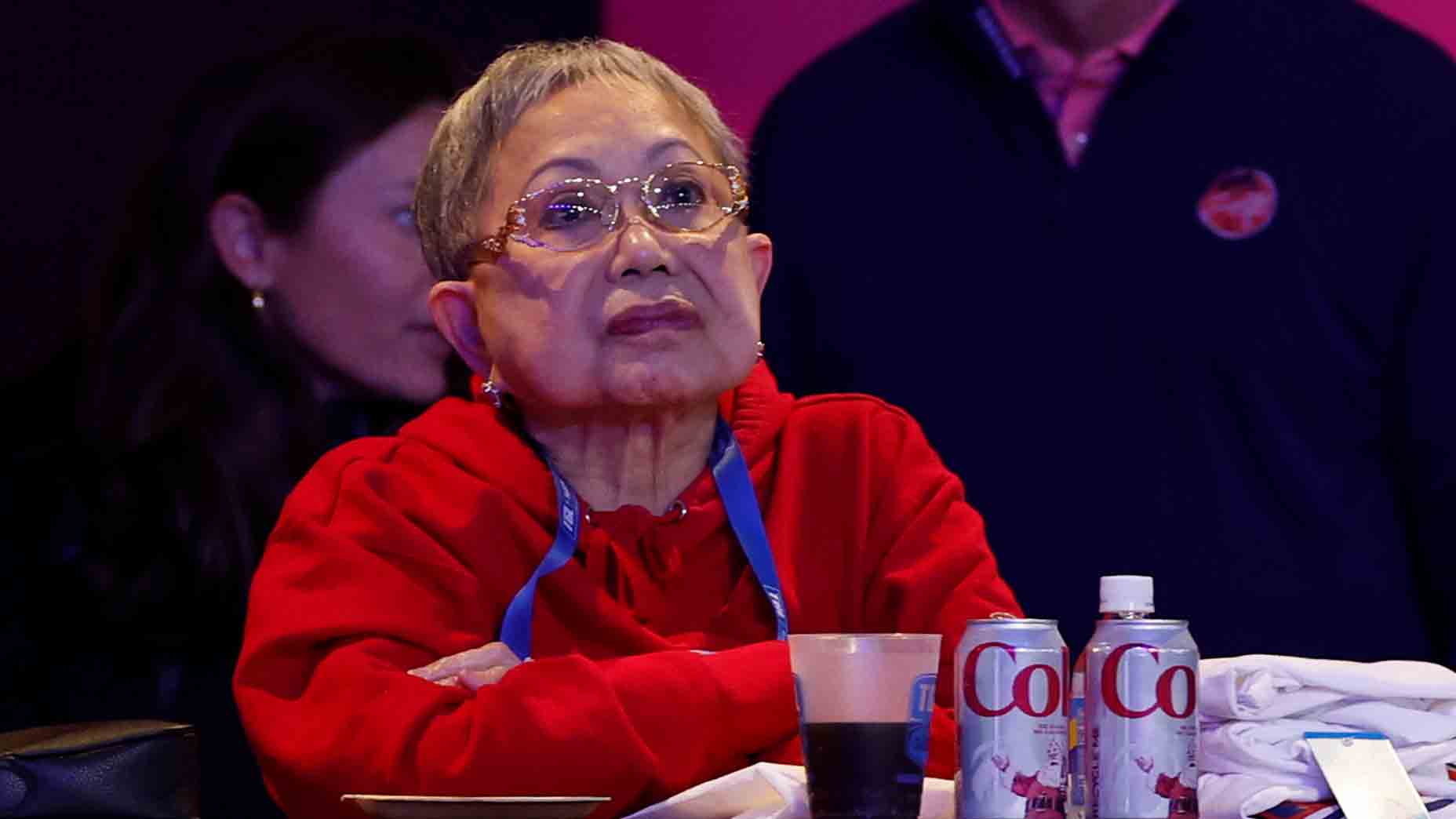The PGA Tour changed this week. Here’s how it looks
- Share on Facebook
- Share on Twitter
- Share by Email
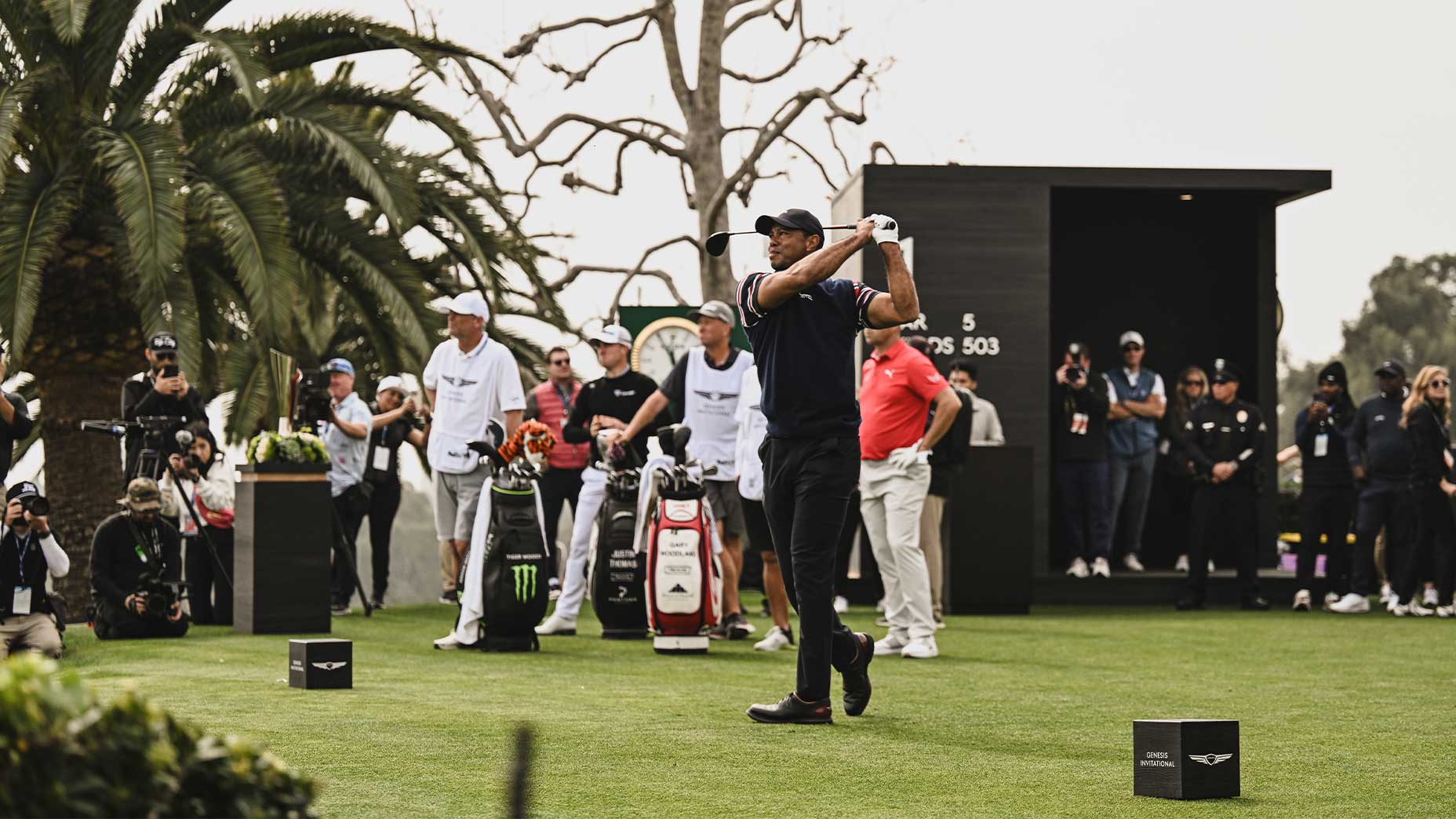
Tiger Woods' WD at the Genesis wasn't enough to overshadow an otherwise fascinating look into the future of the PGA Tour.
Darren Riehl/GOLF
PACIFIC PALISADES, Calif. — If there is a city worthy of stress-testing professional golf’s exclusive, star-focused, image-obsessed, high-priced, overtly capitalist new business model, it is, for obvious reasons, Los Angeles.
In some ways, the PGA Tour’s Signature Events series was built exactly for Hollywood’s pro golf tournament, the Genesis Invitational. There’s a huge, high-profile sponsor (Genesis); a living legend tournament host (Tiger Woods); a historically exclusive and highly-regarded golf course (Riviera Country Club) and one of the best fields in all of professional golf. If the Tour’s new format for Signature Events — starry fields, limited (or no) cuts, lots of money — can’t work here, it’s hard to imagine where it can.
That thinking is what got a lot of the golf world to train its attention on Riviera at the beginning of the week. Tiger’s return to the sport mattered deeply, of course, but his presence was emblematic of a bigger shift on the PGA Tour — a world where the best compete against each other more often and, in theory, more interestingly.
We have seen glimmers of this transition over the last 12 months, but never quite like the Genesis, which is the first bold-faced limited-field event of the year, and as such the first bold-faced limited-field event since the Tour adopted its radical new structure of existence in early 2023. (Pebble Beach was also a limited-field event, but never quite felt that way given the tournament’s pro-am structure and dreadful weather.) Could the Tour survive its first big test? And more importantly, would LA’s entertainment-desensitized audience care?
The first answers arrived on Wednesday, when Riv welcomed an invite-only pro-am on the eve of the tournament. Those who paid the purported $10,000 entry fee got their money’s worth: the field was filled with superstars of golf and beyond, including celebrities like Al Michaels, Will Arnett and Josh Allen. A smaller group of VIPs and VUJs (Very Unimportant Journalists) were permitted to wander the fairways with those groups, watching Woods’ final practice round and Allen’s missile-launcher-adjacent driver and Arnett’s annoyingly charming scally cap in an audience of less than 200.
The vibe was subdued and inarguably clubby, and the lack of fans left the whole thing feeling like the opposite of whatever the pros mean in their weekly calls to “grow the game.” But there was a special energy among the smaller group who had been admitted on property — the same kind the Tour is hoping the event will engender more broadly. As the groups lapped the par-4 10th, a volunteer named Rick could hardly stifle a giggle.
“I used to play in the Pro-Am, but now I’m being ‘financially responsible’ [finger quotes] on a fixed income,” he cracked. “I might like today even more than those days.”
Rick was there again once the fans arrived on Thursday morning, though his excitement seemed blunted. Compared to last week’s riot control, volunteering at the Genesis doesn’t offer much by way of drunken excitement or concern about overcrowding. Rather, the job is fairly standard people-moving, which is admittedly less glitzy than watching celebrity tee shots, even for an event with fewer players and a ton of stars.
Did the smaller field or better starpower have any effect on the week’s crowd sizes? It seems unlikely. Even for those watching the main event (Tiger Woods), good vantage points could be had on all but the most claustrophobic holes. Sunday grounds tickets could be had on the eve of the tournament’s final day for $110, face value, and clubhouse tickets for $175. That isn’t a red-alarm issue, but considering the Tour’s efforts at taking the Signature Events big-time will at some point require enticing the interest of ticket-buying golf fans, it qualifies as notable.
We won’t know for a few days how the tournament did with those watching from elsewhere, though expectations are high. The West Coast hours mean primetime viewing in much of the U.S., and the quiet sports schedule means limited competition. Annually, the tournament’s ratings are some of the best of the year.
But ratings are only one measure of success with the Tour’s Signature Events model; another is entertainment value. This week’s broadcast has been a major win to that end, where the brisk pace of play and shorter tee time window provided an unusual sense of propulsion to the action.
“The flow of everything is really nice,” Jason Day agreed. “There’s not a massive backup on 10 like there usually is. So it’s kind of nice to be able to have that. I’m pretty happy with it.”
CBS, this week’s broadcaster, has seized on the shift. The network invested extra in its Genesis production, tweaking camera setups and tracer locations to maximize the viewing experience and shot-watching capabilities. Producer Sellers Shy rigged a remote-operated camera inside one of the palm trees on the 10th hole, arguably the most famous on the course, to give viewers a brand-new vantage point of the action.
“At the end of the day, the Tour is raising its product with the Signature Events,” Shy told GOLF. “We feel it’s important that we raise ours. We want viewers to feel the difference.”
Of course, no amount of cameras can make up for a dry story — and to that end, the Tour has also been blessed. Friday’s “cut” day — where only 19 players were removed from a field of 70 — featured enough Tour drama to fill an entire month, with an ambulance-chasing Tiger Woods WD and an utterly stupefying Jordan Spieth DQ. The downside of those events is that the Tour enters Sunday without two of the five biggest stars in the field by any objective measure, and that it lost both of them through no cutline of its own. The upside is that Woods and Spieth’s exits fueled a day’s worth of breathless coverage from across the sports world, giving the Genesis the brief kind of golf monoculture typically reserved for the majors.
Tiger Woods’ manager explains mysterious Riviera WD, ambulance chaosBy: James Colgan
As for the big focus of the Tour’s Signature Events model — the performance of the stars who remained through to the weekend — the jury is still out. Patrick Cantlay (-14) leads after 54 unglamorously brilliant holes, while a host of other stars remain within striking distance (Xander Schauffele, -12; Will Zalatoris, -12; Jason Day, -10; Hideki Matsuyama, -8). Will those names be enough to lift the Genesis into must-watch TV on a Sunday in late February? The Tour hopes, but as is the case with all but a few players and events, a heart-thumping finish would help.
And isn’t that why we’re here? This week is the first test of the Tour’s ability to coax more drama out of the same pile of superstars, a test that has serious implications for the long-term value of its business model. In theory the Signature Events are a great idea, but it’s important to remember that until we’ve witnessed a substantial shift, the Siggies are still very much in theory.
“I mean, this is — I don’t know how long these Signature Events are going to run for,” Rory McIlroy said ominously. “If it’s going to be a year, and then they’re going to look at them again and see what worked and what didn’t work.”
And goodness, what a relief. It was decades of competitive stagnation and contentment that resulted in the upheaval of the last two years. The solution to golf’s future surely isn’t to find a different kind of stagnation and contentment.
After all, the point is not that the PGA Tour has changed; it’s that the Tour is the change. What it is today and what it is tomorrow are two sides of the same shapeshifting coin. The only constants are the players … and the paydays.
McIlroy punctuated it well from the podium on Saturday afternoon, the same day he and almost all of the PGA Tour’s other stars moved one round closer to another big-money Sunday at the Genesis.
“I think for these really big events and the ones that carry a lot of meaning and history — Riviera, Memorial, Bay Hill, those sort of events — I think this week’s worked pretty well,” he said. “It would be great to have a couple extra guys still playing over the weekend, but overall I think it’s worked pretty well so far.”
Pretty well, indeed. But well enough?
We’ll find out on Sunday in LA.
Latest In News

James Colgan
Golf.com Editor
James Colgan is a news and features editor at GOLF, writing stories for the website and magazine. He manages the Hot Mic, GOLF’s media vertical, and utilizes his on-camera experience across the brand’s platforms. Prior to joining GOLF, James graduated from Syracuse University, during which time he was a caddie scholarship recipient (and astute looper) on Long Island, where he is from. He can be reached at james.colgan@golf.com.

